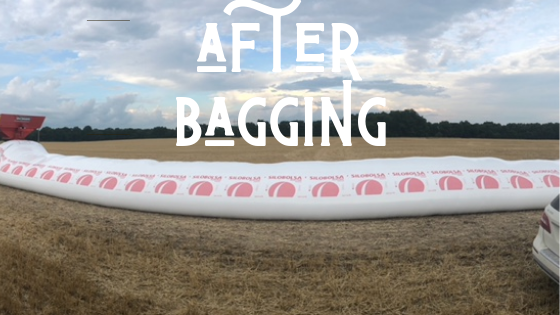|
With an estimated 80 million acres of soybeans planted this year, we expect many first time and continued grain bagger operators alike will have some questions about the best tips to bag soybeans. We get lots of questions about grain bagging, and we love educating. We have bagged grain (corn, soybeans, wheat) on our own farm for more than a decade. How do we accomplish this? To be honest, when you hear people having trouble with grain bagging its almost 99% of the time something that could have been avoided if some thinking and prep had been done ahead of harvest. So right now is the perfect time to start planning and prepping if you plan to store some of your grain in bags. These are best practices to use when bagging any type of grain , but today we are focusing on soybeans. Prepare and Level your Site Now, before harvest, is a good time to start planning where you will place your grain bags. Pick the most level site you can find. If this isn’t possible for your farm, then keep in mind that you need to always bag down the hill or slope, never up hill. Always choose a place furthest away from wooded areas, or places you know there is always a pest problem. Level your site by grading or preferred method so if you get a hard rain while your grain is in bags, the water will run away from the bag, not to it. You can even create a “crown” and bag on top of that, ensuring that any rain will run away from the bag. You are also doing this to make the ground smooth so there aren’t sharp objects visibly sticking up that could puncture your bag. Spread Ammonium Nitrate If you are worried about pests or mice, spreading ammonium nitrate (never sulfur) down where your bag will go before bagging is a good idea. Use bag stretch indicators Any grain bag you use should have a stretch indicator on it that shows you how full to fill the bags. A general rule of thumb is that your plastic should never stretch passed 10% from its original size. Stretching your bag to the max should not be the goal, it should be the limit. Call if you’re not sure Its always better safe than sorry. We’ve been bagging grain for over a decade with continued success. If you have a question at any stage of grain bagging with a Richiger bagger, call our Service Manager Ted Finck at 573-823-9077 (direct line). Most issues can be handled with a quick adjustment over the phone. We also have a service plane that we use for issues we cant resolve over the phone that is able to land in your field and help on site quickly. Learn more about our service dept here. Check bags weekly Check your bags weekly just like you would your grain bins. With bags you are looking for any tears or holes in the plastic. If you see a tear or hole, there is bag repair tape that should be used to repair that and it works great. Use Creolin 1x a month After you’ve bagged your grain and if you are still worried about pests or wildlife, spraying a light spray of Creolin over the top and sides of your grain bag will almost guarantee nothing will want to be around it. This has a recommended repeat of 1x a month. Check out some footage below of us bagging grain on our own farm.Comments are closed.
|




 RSS Feed
RSS Feed